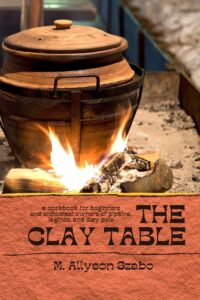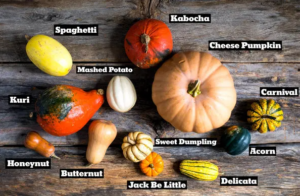It’s that time of year. Most of us enjoy a turkey over the Thanksgiving holiday weekend. My family tends to do the “friendsgiving” thing on Saturday, but we also have a small gathering on Thursday afternoon. Turkey is ubiquitous. It’s also a bear to cook, if you ask many chefs. I’ve never understood that. My turkey always turns out moist, delicious, falling off the bone, and perfect. Maybe I’m just special? Never mind, I’m going to share my turkey secrets with you, so that you can also have a perfect turkey this Thanksgiving!
Ingredients:
- one turkey, 15-22 lbs
- stuffing of choice
- Bell’s seasoning
- bacon or butter
- fresh herbs (parsley, sage, rosemary, and thyme are popular)
I prefer to make my turkey in a Westinghouse, because it frees up my oven for pies and other sides. The cooking method is exactly the same, though, no matter what container you use.
To prepare your turkey, make sure that all the giblets are out of it. Check the main cavity, but also the space around the neck. Sometimes, butchers like to hide little gifts in there, and it’s unpleasant to realize that half way through the cooking process, when the plastic they’re wrapped in begins to melt. I like to rinse my turkey, inside and out, but that’s a personal choice. If you do rinse it, make sure that your sink area is clear of all items that might be besmirched, and do a bleach wipe afterward. Turkeys (and chickens) can carry salmonella and other stuff, and even a little of it lingering on a countertop is bad. Use a lint free towel to dry off the exterior of your turkey. Salt the inside of your turkey well by taking a handful of salt and rubbing it on all the interior surfaces. This isn’t meant to be caking it on. Think of it as like a dry rub for steaks.
Add your stuffing. My family uses a variety of recipes depending on the year. We have a wild rice and sausage meat stuffing, and a more traditional bread and liver stuffing (nicknamed “heart attack stuffing” because of the “one egg per pound of turkey” rule used in it). If you don’t feel like making a stuffing, add the heel of a loaf of bread and one quartered onion to your turkey’s cavity. You can also add an apple or orange, if you like. Do not leave the cavity empty, as it changes how the turkey cooks. If you are in a rush, feel free to make up some “stove top stuffing” and jam it up inside there. I’m not going to judge you. Put your raw, stuffed turkey into the roaster pan or Westinghouse and tie the legs together with the tail tucked up in between them. Tuck the wings down into the bird’s underarms as best you can. Don’t panic if it doesn’t work; if the wings are a bit crispy at the end, they’ll be perfect for making turkey broth the day after Thanksgiving.
Using your hands, loosen the skin over the breasts of the turkey. There are several ways you can proceed here. My personal method is to stuff part of my bread stuffing up into the breast area, where it will keep the breast meat moist and help it cook. However, if you’re not using a bread stuffing, you can instead rub the breast meat UNDER the skin with either bacon or butter. Leave little bits of it under the skin. Slide your fresh herbs up under the skin, too, if you like. I almost always slide in a sprig of rosemary and a few leaves of sage from my garden. These will flavor the breast meat, especially as that bacon or butter melts into it.
Sprinkle the outer skin of your turkey with Bell’s seasoning and a bit of salt, pepper, and paprika (REAL paprika, not the red sawdust that passes for “paprika” in most stores). The skin should be evenly speckled with the seasoning, not covered entirely. Make sure to get some of that on the wings and legs, as well as the breast. Cover the turkey with a lid or tin foil, and put it into the cold oven or Westinghouse.
Bring your oven or cooker to 450F. Add a bit of olive oil or bacon fat to the bottom of your turkey roaster or Westinghouse pan, to help keep your turkey from sticking. If you want it to be really rich, you can melt a stick of butter in there, but beware that it may smoke due to the high temperature. Once the oven is to temperature, let it sizzle for 15 minutes, no more. Turn the heat down to 300F, and walk away.
You will not look at your turkey again until an hour before you think it’ll be ready. I mean, you can peek now and again, but you don’t need to baste or anything else. I will sometimes suck the fat out of the bottom of the roaster, if I think it’s getting too much, but that’s an individual thing.
Turkey cooks for about 20 minutes per pound of turkey, when stuffed. That means if your turkey is 21 lbs, like mine, it’ll take about 7 hours (yes, SEVEN) to cook (20 minutes per pound, that’s 3 pounds per hour, divided into 21 lbs, which gives you an answer of 7). When you get to the bigger end of turkeys (over 18 lbs), the timing gets wiggly. I might only have my turkey in for six hours, so I have to watch it during the last couple of hours to make sure it isn’t overcooked. For anything under 18 lbs, though, you’re safe to count 20 minutes per pound of turkey. Always start checking on it an hour before you think it’ll be ready, though.
Having a meat thermometer on hand is really handy. I use mine all the time. Turkey must be between 160 and 165F internally to be properly cooked. Turkey also continues to cook and rise in temperature for a full 20 minutes after it comes out of the oven. I always aim for 160F, knowing it’ll go up more as it rests before I slice it up.
If you don’t have a meat thermometer, or don’t care to use one, you can also do the “leg wiggle” method of testing. As you near the end of your estimated cooking time, wiggle one of the legs gently. You may need to pierce the skin if there’s a lot of liquid inside, which is fine. Your turkey leg should be very loose, almost coming off, when it’s ready. If your turkey leg comes off in your hand when you go to wiggle it, it’s definitely ready. Don’t panic if it does… this method of cooking will result in it not being dry even if you’re a little over in your cooking time.
Turkey MUST rest for a minimum of 15 minutes before you cut into it. Take it out of the oven, and out of the roaster. Place it on a large cutting board. I usually place a handful of towels I don’t much care about underneath the board, because the juices will run when you start cutting, and it’s easier to clean up if it’s all just drained into a towel. The resting time allows much of the liquid to be reabsorbed into the turkey meat itself, making it taste incredibly moist and delicious. It also lets it finish cooking. While you’re waiting, make some gravy with the pan drippings!
Don’t forget to take your stuffing out before you carve the turkey. You can do that at the 15 minute mark, if you like.
I usually cut the turkey up onto two platters: one dark, and one light meat. The breast is the most difficult part to cut up, in my opinion. It’s always at an odd angle. Take a few pictures of the turkey before you start cutting it up, and then carefully (using silicon heat pads if necessary) remove the two breasts and put them flat on the cutting board. It should be fairly easy, by cutting along the breast bone and then just gently pulling downward. Once on the cutting board, your turkey breast meat will slice up quickly and neatly. After that, you can pull off the legs, thighs, wings, and whatever dark meat you can get at. I can’t stress how useful silicon gloves are, because you can clean them in a way that fabric ones can’t be, which means you can grasp the various parts of the turkey more easily.
I know it seems like a lot of work. It really isn’t. Most of my turkey time is spent doing all the other assorted foods that go along with turkey. We usually eat around 5pm or so, which means I’m not getting up at the crack of dawn to try and do a gyn exam on my turkey before I’ve had coffee. I can get up at a reasonable hour, and set it all in motion by 10am. Once you’ve done this a time or two, it’ll become second nature. It’s such an easy way to prep the turkey.
A few notes:
- Don’t pre-stuff your turkey the night before. You can make the stuffing ahead of time and have it ready to go, but letting it sit overnight inside the turkey will be a sure way of getting everyone to the ER in record time. Don’t do it.
- Do invest in silicone gloves, a decent carving knife (NOT an electric knife), and the Bell’s seasoning.
- If you use bread stuffing, REALLY stuff it in there. Cram it in. Every chef I’ve watched on television goes on and on about how you should never over stuff your turkey For Reasons. Ignore them. They’re wrong. Over stuffing your turkey will result in the turkey disjointing itself during the roasting process. This makes carving it up later SO much easier. There’s something special about opening the turkey roaster and just looking at your disjointed turkey, held together only by skin.
- Ignore those stupid pop up timer things that come in some of the turkeys. They often don’t work, and sometimes they pop early. Just pull them out and toss them.
- Remember to defrost your turkey, folks. None of this will work with a frozen turkey. Don’t try and cook a turkey from frozen, please. Even if you get one that says it CAN be cooked from frozen, just don’t. Whole turkeys should be slow roasted to preserve the moistness and flavor. Here’s a link to a handy defrosting schedule.







 My newest cookbook is now available!
My newest cookbook is now available!



